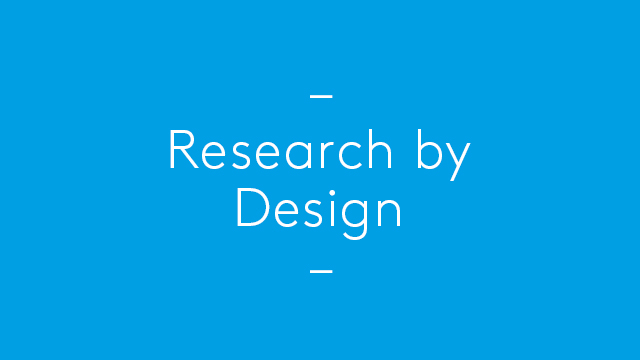
(Herbert Read)
- Research into or about design: it is the most straightforward research practice in art, design and architecture. This is historical, social, technical, material research, with countless models from which it derives its rules and procedures, similar to science of design/ HOW CAN I TELL THAT I THINK TILL I SEE WHAT I SAY?
- Research through or by design: material-based research, development work and action research: practical experiments, step-by-step diaries describing a resulting report that aims to contextualize it, report and diary communicate the result which is what separates research from gathering the referenced materials.. similar to design science. materials research-development work-action research (Frayling)/ HOW CAN I TELL WHAT I THINK TILL I SEE WHAT I MAKE AND DO?
- Research for design: development work whose end product is an artifact, the thinking is embodied in the artifact, the goal is not primarily communicable knowledge, the gathering of reference materials rather than research proper, similar to scientific design/ HOW CAN I TELL WHAT I AM TILL I SEE WHAT I MAKE AND DO?
Research by Design is a type of academic investigation through which design is explored as a method of inquiry, by the development of a project and also exploring the different materials by which a design is carried out-sketches, mapping, among others(…) it is a strategy used to describe the various ways in which design and research are interconnected when new knowledge is produced about the world through the act of designing (Barbosa et al., 2014)
Research by Design five models: artistic/intuitive/ adaptive/ analytical and systematic.
- Pre-design research phase: characterized by understanding, prior to design, aims to bring a basic perception, connecting starts with end-users, stakeholders and experts, potential answers and future design directions, verification of whether the problematic situation is indeed a wicked problem that requires a design inquiry approach
- Design Phase: interactive exchange with agents, the designer integrates implementation into the nature of inquiry, future potentials are projected, based on programmatic demands a suite of proposals are developed and rationalized (…) in the Design Studio students and tutors may engage in a research partnership of mutual problem investigation (…) Design is both method and outcome
- Post-Design Phase: final synthesis of the work, coherently presented, new knowledge becomes available for a wider audience through a strategic and conscious communication, interactive process ends here, research and design are decoupled.
New definition:
Research by design is a method, which uses design to research spatial solutions for a certain area, accommodating a design process, consisting of a pre-design phase, a design phase and a post-design phase, herewith providing a philosophical and normative basis for the design process, allowing to investigate the qualities and problems of a location and test its (spatial) potentials, meanwhile creating the freedom to move with the proposals in uncharted territory, and producing new insights and knowledge interesting and useful for a wide audience.
References
- Rob Roggema, 2016. Research by Design: Proposition for a Methodological Approach. In Urban Sci. 2017, 1, 2; doi:10.3390/urbansci1010002
- Christofer Frayling, 1993. Research in Art and Design. In Royal College of Art Research Papers, Vol 1, No 1, 1993/4
- DeQueiroz Barbosa E.R., DeMeulder, B., Gerrits, Y., 2014. Design Studio as a Process of Inquiry: The case of Studio Sao Paulo. In AE… Revista Lusófona de Arquitectura e Educação Architecture & Education Journal 241, Theme I, No. 11, pp. 241-254
Image available here

Pingback: Roggema’s three-staged method | connecting data to information to knowldge